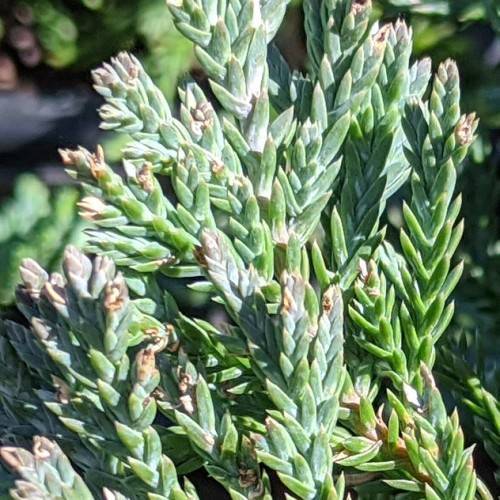
creeping juniper
Juniperus horizontalis 'Wiltonii'
Cycle:
Perennial
Watering:
Minimum
Hardiness Zone:
2
Flowers:
Flowers
Sun:
Full sun
Soil:
Sandy Loamy Clay Rocky
Fruits:
Fruits Ready In Fall
Leaf:
Yes
Growth Rate:
Low
Maintenance:
Low
Drought Tolerant:
Yes
Salt Tolerant:
Yes
Invasive:
Yes
watering
Creeping juniper requires more frequent watering in the summer months, and less in the winter. During the growing season (spring, summer, early autumn), the best way to water is to thoroughly soak the ground when the top 2 inches become dry. During winter, water only deep enough to keep the soil lightly moist. It is important not to overwater since too much water can rot the plant's roots or cause fungal diseases.
sunlight
Creeping juniper (Juniperus horizontalis 'Wiltonii') thrives in areas where it can get both direct sunlight and partial shade. It can tolerate full sun but it does best in spots that get both full sun and partial shade, such as east- and west-facing walls, half shade, or other sunny spots that are sheltered from direct afternoon sunlight. Full shade is not recommended for this species. It is best to provide creeping juniper with at least 4 hours of direct sunlight a day; however, it can tolerate up to 8 hours a day.
pruning
Creeping juniper (Juniperus horizontalis 'Wiltonii') should be pruned in late winter or early spring. Pruning should be moderate, no more than 1/3 of the growth should be removed in any single pruning session. Pruning helps to maintain the attractive spreading shape of the plant and to control the size.
